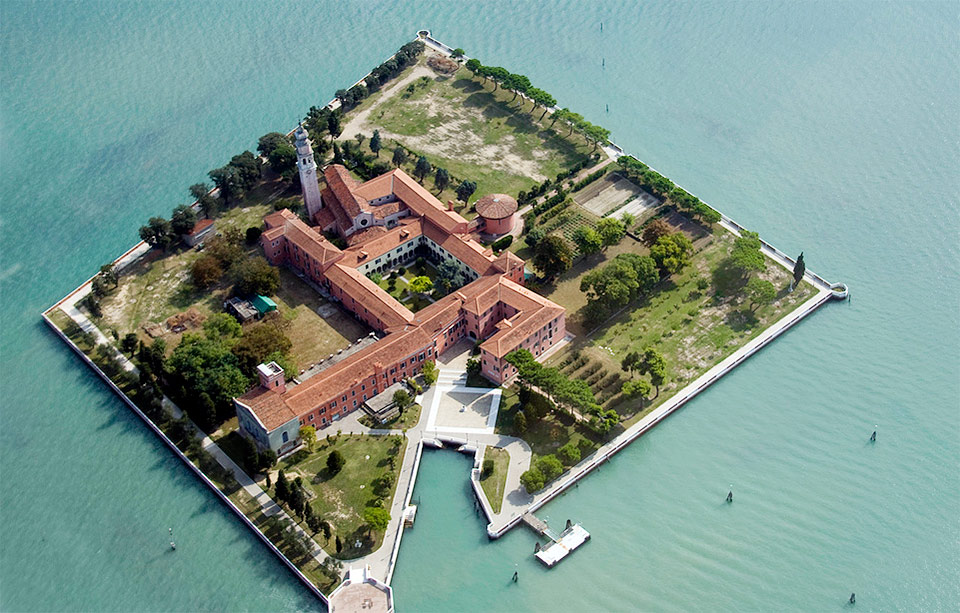The San Lazzaro degli Armeni Island is a small island in the Venice Lagoon, completely occupied by a Armenian monastery that is the mother-house of the Mekhitarist Order.
The Venice island is one of the world's foremost centers of Armenian culture. Inside the convent there is an important library and in the church there are valuable paintings. This Armenian island was loved by Lord Byron. In 1816, Lord Byron visited the island twice a week for six months, studying Armenian and envying the monks' comfortable academic lifestyle. Lord Byron is remembered by a permanent exhibition. Today, the Armenian monastery lies amid gardens with flowers, cypress trees, and peacocks. Its residents include 10 monks, 10 seminarians, and 15 Armenian students who study Italian language and culture (presumably with a side dish of Armenian culture and history). It also has a long tradition of hospitality to scholars and students.
The Monastery of San Lazzaro degli Armeni in Venice has an extraordinary collection of treasures, including:
- A 150,000-volume library.
- More than 4,000 Armenian manuscripts, some nearly 1,300 years old.
- A Koran created after the death of Mohammed.
- An Indian papyrus from the 13th Century.
- A Egyptian sarcophagus and mummy from the 15th Century B.C.
- Thrones, tables, statues, paintings, tapestries, gold, silver, jewels, and other items that the monks either bought or received as gifts over the centuries.
The most valuable books, manuscripts, and other treasures are on public display. The Armenian monks take great pride in their monastery's material possessions.
How to get to San Lazzaro Armenian Island in the Venetian Lagoon?
The Armenian island of San Lazzaro can be easily reached by public transport from Venice, water bus - line 20 departing from San Marco - San Zaccaria.
How to buy tickets for the San Lazzaro degli Armeni island?
From the San Lazzaro boat stop in the island, walk toward the entrance to buy a ticket and wait for the tour to begin. Habitually there is one guided tour a day, starting at 15.00, on arrival of the vaporetto that leaves San Zaccaria at 14.45 hours. Groups of visitors may ask a private tour with different schedule. Father Vrtanes and other fathers guide the tours in several different languages.
Armenian Island History
The islet's isolation, at some distance from the principal islands forming the actual city of Venice, made it an ideal location for the quarantine station and leper colony founded there in the twelfth century, receiving its name from St. Lazarus, patron saint of lepers. Abandoned in the sixteenth century, in 1717 it was given by the ruling council of Venice to a group of Armenian monks who had escaped from Turkish persecution, five years earlier placed themselves under the protection of the Pope, and eventually made their way to Venice. Mekhitar and his seventeen monks built a monastery, restored the old church, and enlarged the island to its present 30,000 square metres, about four times its original area.
Its founder's temperament and natural gifts for scholarly pursuits immediately set the Mekhitarist Order in the forefront of Oriental studies: the monastery published Armenian historical, philological and literary works and related material, renowned for their scholarship and accuracy as well as for the beauty of the editions, on its own multilingual presses, which shut down in 1991, although an eighteenth century printing press may still be seen. San Lazzaro houses a 150,000-volume library, as well as a museum with over 4,000 Armenian manuscripts and many Arab, Indian and Egyptian artifacts collected by the monks or received as gifts.


